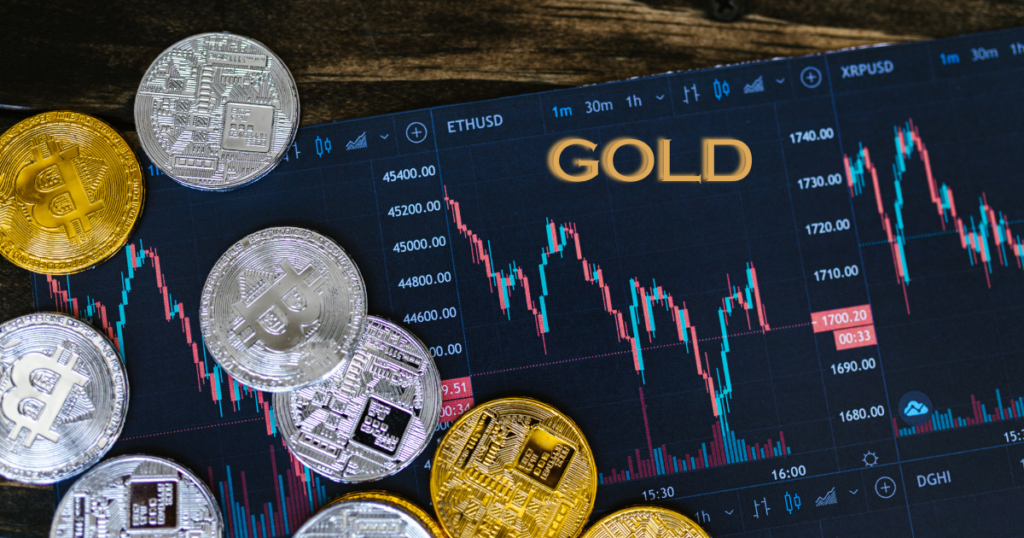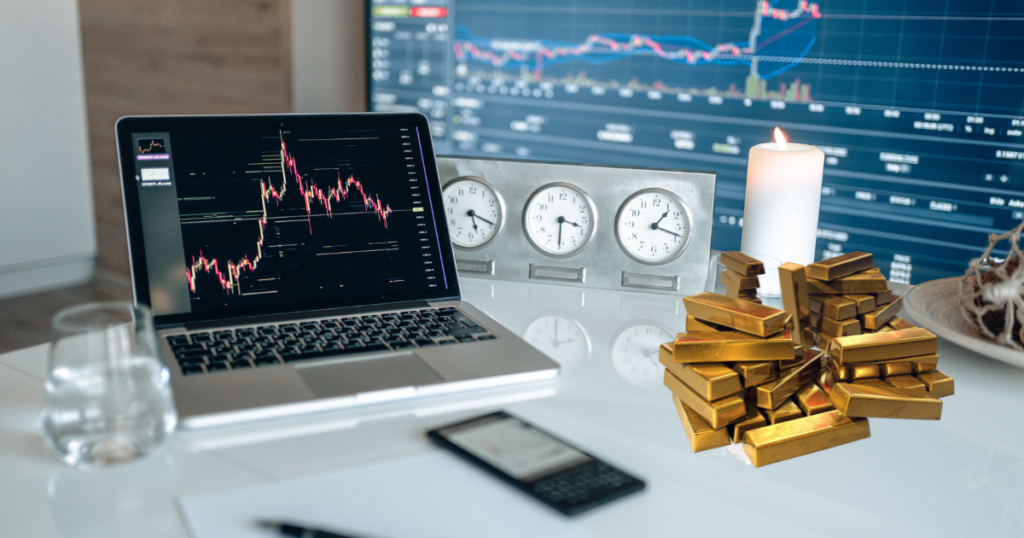Gold is one of the most popular commodities traded globally, known for being a reliable asset during tough economic times. Because the gold market is very active, it offers great opportunities for both new and experienced traders. However, knowing the right time to trade gold can greatly affect how much profit you make. By understanding market activity, price changes, and when the market is busiest, traders can increase their chances of success. This article will explore the best times to trade gold, the different market sessions, and strategies to help you earn more profit.

Understanding Gold Trading Sessions
The gold market operates 24 hours a day, but liquidity and volatility vary across different time zones. Gold is primarily traded in three major markets: the North American, European, and Asian sessions. Each of these sessions brings unique opportunities and challenges to traders. Knowing how these sessions interact and overlap can provide an edge in determining the best time to trade gold.
1. Asian Trading Session (Tokyo and Sydney)
The Asian session is the first to open and sets the tone for the day. The key markets during this session are Tokyo and Sydney. The trading hours for these markets are as follows:
- Tokyo: 12:00 AM to 9:00 AM GMT
- Sydney: 10:00 PM to 7:00 AM GMT
During the Asian session, gold trading volume tends to be lower than in other sessions. As a result, price movements can be relatively muted. However, traders who prefer less volatility or those who trade based on news and events in Asia may find this session appealing.
2. European Trading Session (London)
London is one of the most important centers for gold trading. The European session is highly liquid and often witnesses large price movements, especially when it overlaps with the end of the Asian session. The London market opens from 8:00 AM to 5:00 PM GMT, and during this time, gold prices can fluctuate significantly due to high trading activity.
Traders often look for breakout opportunities during the London session. Additionally, economic data from the European Union can impact gold prices, providing multiple entry points for traders.
3. North American Trading Session (New York)
The North American session is where most of the significant moves in gold prices occur. The New York market, which opens from 1:00 PM to 10:00 PM GMT, is particularly important because it overlaps with both the European and Asian sessions, leading to high liquidity. Additionally, U.S. economic data releases, such as employment reports and interest rate decisions by the Federal Reserve, have a direct impact on gold prices.
Traders seeking volatility often focus on this session, especially when major economic news is expected. This session offers the best opportunities for day traders and scalpers looking for quick price movements.
Overlapping Trading Sessions and Their Importance
One of the best times to trade gold is during the overlap of major trading sessions, as this is when liquidity is at its peak. More traders are active, leading to increased volatility, which provides more opportunities for profitable trades.
- The London-New York Overlap
The most significant overlap occurs between the London and New York sessions, from 1:00 PM to 5:00 PM GMT. This period is highly active, with both markets open, resulting in considerable price swings. Traders can capitalize on this by using strategies that focus on volatility and trend-following. For those seeking maximum profit potential, this overlap is arguably the best time to trade gold.
- The Tokyo-London Overlap
The overlap between the Tokyo and London sessions, although less significant than the London-New York overlap, still presents trading opportunities. Occurring from 8:00 AM to 9:00 AM GMT, this short window can see increased market activity as European traders react to Asian market movements.
Best Times of the Week to Trade Gold
While gold can be traded every weekday, not all days are created equal. The most active trading days typically fall mid-week, when liquidity is highest. Tuesdays, Wednesdays, and Thursdays tend to see the most market activity. On these days, market participants include large financial institutions, hedge funds, and central banks, all of which increase the potential for substantial price movements.
Mondays and Fridays
Mondays and Fridays generally see lower trading volumes. On Mondays, many traders are adjusting their positions after the weekend, and the market can be less volatile. On Fridays, traders are often closing out their positions ahead of the weekend, leading to lower liquidity in the later hours of the trading day.
However, there are exceptions. If significant geopolitical events or economic data releases occur over the weekend or towards the end of the week, both Mondays and Fridays can see heightened volatility.
How Economic Events Impact Gold Trading
Gold is highly sensitive to global economic events. Understanding these events and their timing can help traders optimize their trading hours for maximum profitability. Here are a few key economic factors that influence gold prices:
U.S. Economic Data
Since gold is priced in U.S. dollars, economic data from the United States, such as non-farm payroll reports, GDP growth rates, and Federal Reserve interest rate decisions, can significantly affect gold prices. These reports are typically released during the North American trading session, making this session particularly important for traders focused on short-term price movements.
Inflation Rates
Gold is often seen as a hedge against inflation. When inflation rates rise, the value of fiat currencies like the U.S. dollar tends to fall, leading to increased demand for gold. Traders should pay attention to inflation reports from major economies, especially the U.S., to gauge potential price movements.
Geopolitical Events
Gold is considered a safe-haven asset during times of political or economic instability. Events such as wars, elections, and trade disputes can cause sharp spikes in gold prices. Traders should monitor geopolitical developments, as these can create sudden and significant opportunities for profit.
Trading Strategies for Different Gold Trading Hours
To maximize profits, traders must tailor their strategies to the specific trading hours and sessions they are engaging in. Below are a few strategies suited to various trading sessions.
Breakout Strategies for the London-New York Overlap
During the London-New York overlap, gold prices are highly volatile, providing an ideal environment for breakout strategies. Traders can use technical indicators such as Bollinger Bands or Moving Averages to identify breakouts and enter trades when the price moves outside of a defined range. Stop-loss orders can be placed just below the breakout level to minimize risk.
Trend Following During the Asian Session
For traders who prefer the quieter Asian session, a trend-following strategy can be highly effective. By identifying long-term trends using technical analysis tools like the Relative Strength Index (RSI) or Moving Average Convergence Divergence (MACD), traders can enter trades in the direction of the trend and ride it for profits.
Scalping During High Volatility Periods
Scalping is a strategy that involves making multiple small trades throughout the day, taking advantage of small price movements. This strategy is particularly effective during periods of high volatility, such as the London-New York overlap. Scalpers can use short-term indicators like the Stochastic Oscillator or Parabolic SAR to make quick decisions and exit trades with small, consistent profits.

Best Practices for Maximizing Profit in Gold Trading
While timing is crucial, successful gold trading also depends on discipline, risk management, and staying informed about market trends. Here are a few best practices to keep in mind:
· Risk Management
One of the most important aspects of trading is managing risk. Traders should always use stop-loss orders to limit potential losses. Additionally, position sizing should be based on account size and risk tolerance. It’s recommended that traders risk no more than 1-2% of their total trading capital on any single trade.
· Staying Informed
Gold traders should stay informed about economic and geopolitical events that can influence gold prices. Using economic calendars, financial news platforms, and market analysis tools can help traders anticipate price movements and make informed trading decisions.
· Diversification
While gold trading can be highly profitable, it’s essential to diversify one’s trading portfolio to reduce risk. Traders should consider including other assets such as stocks, commodities, or currencies to spread risk and increase profit potential.
Conclusion
Gold trading offers numerous opportunities for profit, but the timing of trades plays a crucial role in determining success. Understanding the different market sessions and their overlaps, as well as how economic events impact gold prices, can give traders a significant edge. By developing strategies suited to specific trading hours and adhering to best practices such as risk management and staying informed, traders can maximize their profit potential in the gold market. Whether you’re a day trader looking for short-term opportunities or a long-term investor seeking stability, choosing the right gold trading hours is key to achieving your financial goals.

